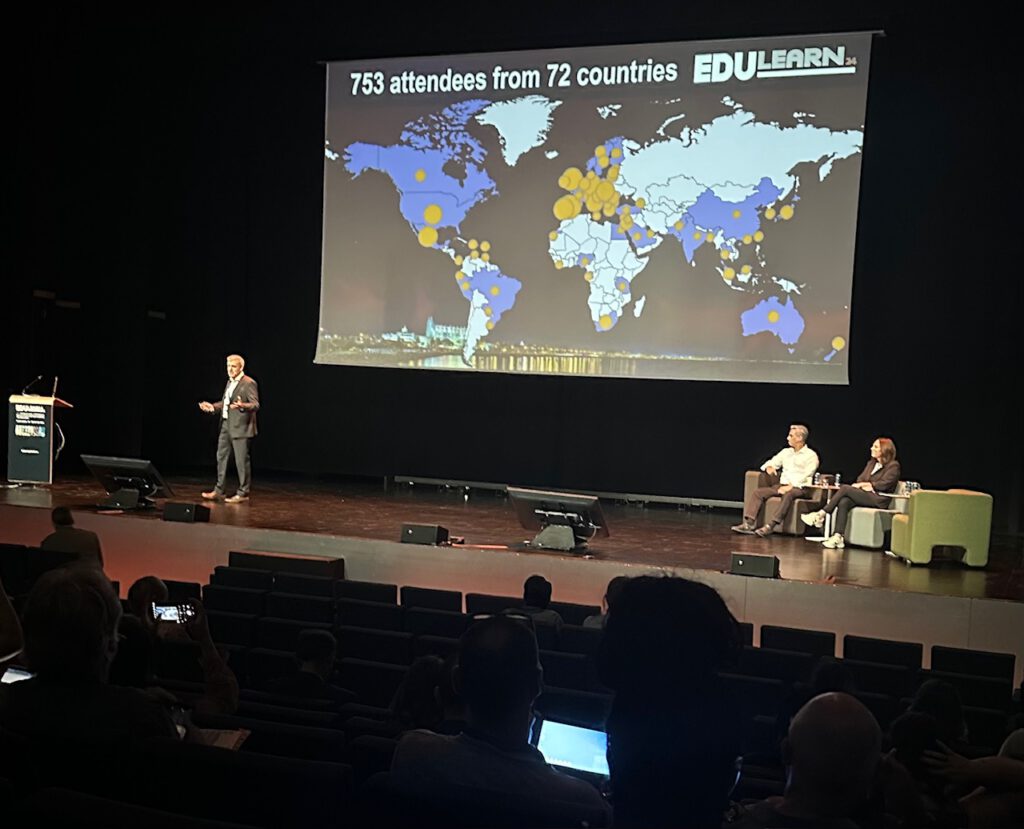
In addition to the already available workshop materials, you can use this poster for free.

In addition to the already available workshop materials, you can use this poster for free.
Last week, we had the pleasure of conducting a workshop at EDULEARN24 (IATED) in Spain. The AI-Maturity-Matrix workshop sparked some very stimulating discussions. Thanks to all participants. Most of you were able to assign yourselves to one of the 10 sections of the matrix and finally found out, “Are we AI-Newbies, AI-Experimenters, or AI-Avant-Garde, or …?”
Today, as promised, the materials from the workshop are available for download and can be used by other moderators and workshops.
You can download the moderator-slides (pptx) and the participant-worksheet (docx) here:
http://ai-workshop.trainings-online.de
The affiliated paper “AI MATURITY MATRIX – A MODEL FOR SELF-ASSESSMENT AND CATEGORIZATION OF AI-INTEGRATION IN ACADEMIC STRUCTURES” can be downloaded on ResearchGate:
https://www.researchgate.net/profile/Stefan-Bieletzke


Together with students who use our chatbots, a hip-hop video was created that well reflects the performance capabilities.
Dive into the future of higher education with SMARTA (Student Motivation and Reflective Training AI-Assistants). This project introduces AI chatbots as personal study coaches, aiming to bridge the educational gap known as the Two Sigma Problem. With the power of AI, SMARTA offers a trio of specialized chatbots designed to enhance student motivation, deepen engagement, and personalize the learning journey for over 5000 students at a German university. From fostering empathetic support to encouraging self-directed learning and interactive dialogues, these chatbots mark a significant leap towards mimicking the personalized touch of one-on-one tutoring. Discover how SMARTA leverages AI to turn the Two Sigma challenge into an unparalleled opportunity for students alike. Get ready to explore the cutting-edge intersection of technology and education, where personalization meets excellence. Join us on this enlightening journey to redefine the landscape of higher education through the lens of AI.